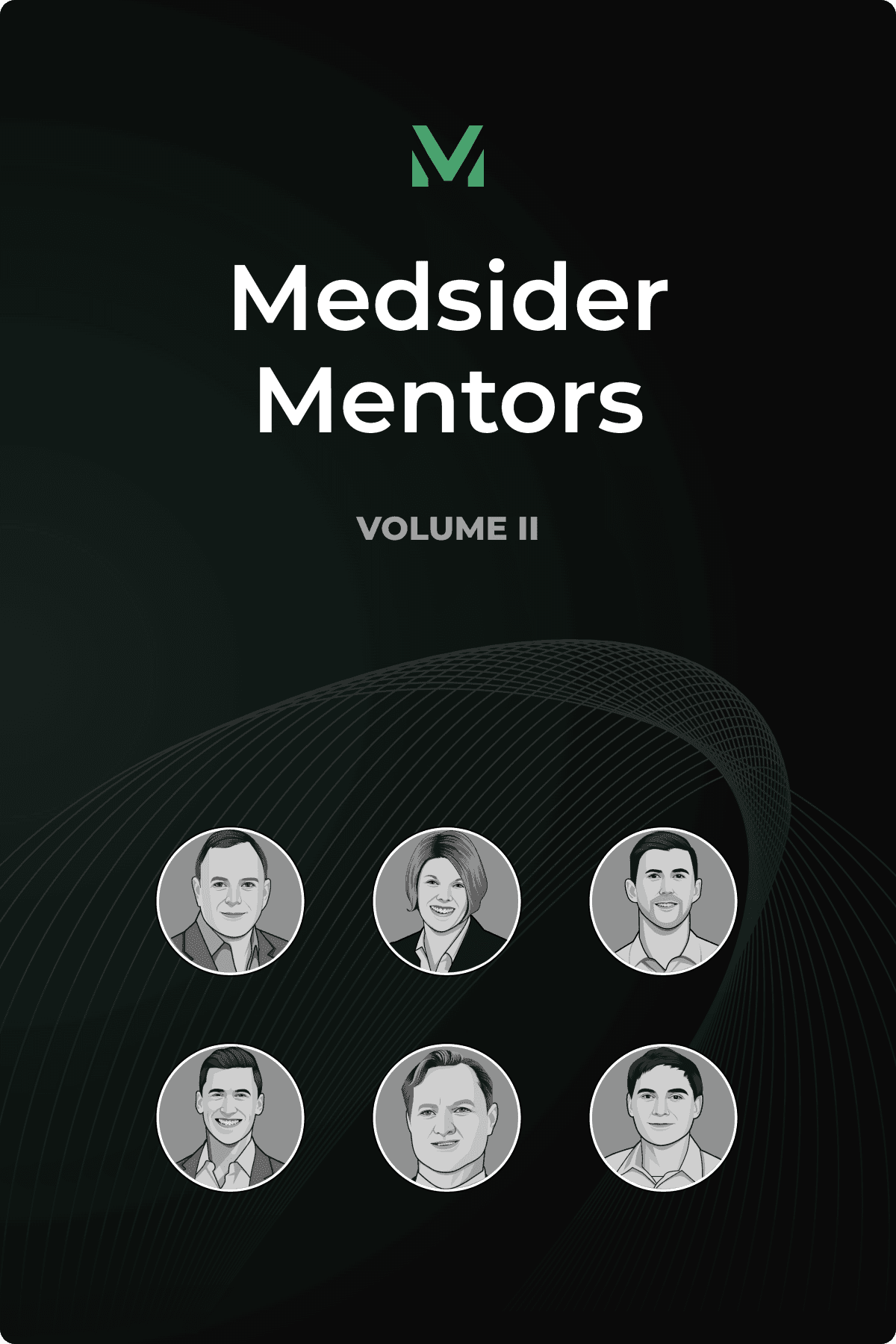How Resource Constraints Can Enhance Your Development Process
Interview with Reia CEO Kaitlin Maier

Key Learnings From Kaitlin's Experience
Use constraints to sharpen design and development discipline. When you’re building with limited funding, every prototype and decision has to earn its keep. Reia’s team couldn’t afford to design in isolation — they involved clinicians and patients from day one, iterating more than 50 times on feedback alone. That discipline turned constraint into focus and ensured the final product solved real usability problems before accelerating development.
Turn regulatory feedback into your next milestone. When FDA required clinical data that Reia hadn’t planned for, the team pivoted fast — designing a pragmatic trial that met agency expectations and deepened their understanding of the device. That experience shaped their next move: launching a larger, NIH-funded RCT to validate usability and outcomes beyond what was required. Ultimately, the feedback sharpened their evidence strategy and accelerated trust with physicians.
Non-dilutive funding buys time, leverage, and control. Rather than rush into venture capital, Reia fueled its development entirely through NIH small-business grants, securing $5 million without giving up a single share. Those awards forced long-term planning but allowed the team to move deliberately, refine the technology, and approach equity investors from a position of strength.
The best startups don’t begin with market research — they begin with problems too compelling to ignore.
For Kaitlin Maier, that problem appeared during a 10-week senior thesis at Dartmouth. She and her three co-founders — two fellow female engineers and a urogynecologist — were interviewing clinicians about unmet needs in women’s health when they first learned about pelvic organ prolapse.
The condition affects nearly half of women over 50, yet the standard treatment hasn’t changed much since Hippocrates used pomegranates as pessaries in 400 BC. A pessary is a small internal support device used to hold pelvic organs in place when muscles weaken. Today’s versions — rigid silicone disks and cubes — still require quarterly physician visits for cleaning and replacement. It can be difficult or impossible for patients to manage them on their own. Some travel hours for maintenance appointments.
The team decided to redesign the pessary entirely. They envisioned a collapsible device that could be inserted and removed like a tampon — comfortable, intuitive, and self-managed. Three years of nights and weekends later, that concept became Reia.
In May 2024, the company received FDA clearance for its self-managed pessary — one of the first designed to fully collapse for insertion and expand to provide internal support once in place.
“We just couldn’t let the idea go,” Kaitlin says. “It was something we all had a shared passion for.”
Guest
CEO of Reia
Kaitlin is the co-founder and CEO of Reia, where she leads business strategy, IP development, and product design. A mechanical engineering graduate of Dartmouth, Kaitlin previously worked at Sherpa Technology Group, developing patent strategies for leading life science and technology firms. She and her co-founders began Reia as a senior thesis project, ultimately creating the first self-managed pessary to bring long-overdue innovation to women’s pelvic health.
Sponsor Message
We recently released the seventh volume of Medsider Mentors, which summarizes key learnings from the most popular Medsider interviews over the last six months.
We get it—keeping up with every Medsider interview isn’t easy. That’s why we created Medsider Mentors. These e-book volumes distill the best practices and insider secrets from top founders and CEOs, all in a downloadable, easy-to-digest format.
Check out the latest volume here. Premium members get free access to all past and future volumes, plus a treasure trove of other resources.
If you’re not a premium member yet, you should definitely consider signing up. We recently revamped Medsider with swanky new features, especially for our premium members. In addition to every volume of Medsider Mentors, you’ll get full access to our entire interview library, dating back to 2010.
You’ll also get Medsider Playbooks—curated guides packed with actionable insights on topics like fundraising, regulatory challenges, reimbursement strategies, and more.
And if you’re fundraising, don’t miss our exclusive investor database, featuring over 750 life science VCs, family offices, and angels. We’ve even created 3 custom packages to help you with your next fundraise.
Learn more by visiting Medsider Mentors.
How to Design Medical Devices on a Limited Budget
After graduation, Kaitlin and her co-founders kept working on the idea that had started in the Dartmouth lab.
With no outside funding and only evenings and weekends to spare, progress depended on persistence and creativity.
All funding came from small pitch competitions worth a few hundred to a few thousand dollars. Every penny went straight into prototyping. The team couldn’t afford to pursue any design without clear validation, which forced constant check-ins with practitioners and patients.
They began with five distinct concepts and, through feedback, narrowed to one. From there, they iterated more than 50 times — often with cardboard, string, and hand-cut silicone.
“We couldn’t spend too much effort going down any one path without some validation,” Kaitlin explains. “That reinforced continual check-ins with all of our stakeholders to make sure each decision worked for both patients and practitioners.”
Designing for Approachability
The aesthetics weren’t about vanity — they were about usability and trust.
Traditional pessaries can appear clinical and intimidating: stiff pink or white silicone disks that discolor over time. As Kaitlin puts it, “large pieces of silicone that immediately make you think, this does not look comfortable to insert inside me.”
Reia chose the softest silicone durometer that remained structurally effective. The team ran focus groups on color alone and selected light blue — a shade users associated with medical reliability but still pleasant to handle. It also resists discoloration. Details like grip texture and finger placement reflect Reia’s broader goal: designing a device that remains easy to use for patients with limited hand dexterity. To support these users, Reia later developed a companion applicator.
User testing revealed that even language mattered. When participants described prototypes as “a flower” or “an umbrella,” the team recognized those associations — words that suggested both support and comfort — and moved in that direction.
Building IP the Smart Way
While iterating on design, Kaitlin also had to navigate Dartmouth’s tech-transfer process. Her early career in intellectual property proved invaluable. The negotiation took about a year, and Reia retained full rights to its IP by structuring the buyback from the start. “Understanding that relationship early with your tech-transfer office is critical,” she says. “It can really affect what happens with your company in terms of who controls the rights.”
For patent strategy, Reia started with a provisional filing — inexpensive, idea-rich, and flexible for one year. That document covered roughly ten early designs. Over time, most dropped away, leaving the foundation for five strategic patents covering the core structure, key features, and the companion applicator. “Engineers want to patent everything,” Kaitlin says. “But that doesn’t always make sense for a startup where IP is expensive.”
Working with an experienced attorney, they used continuation patents to keep options open without filing everything at once. The result: a lean but defensible portfolio — exactly what investors and acquirers expect from early-stage medtech.
The Payoff of Working Within Constraints
Even after landing their first NIH grant, the team stayed resource-constrained.
Rather than hire a clinical research organization (CRO), they built their own quality management system and ran their own clinical trial — a decision Kaitlin describes as necessary given their limited funding. “It wasn’t the best use of our funding at the time to hire consultants,” Kaitlin says. “We just learned to do it ourselves.”
Seven years later, the same original co-founders still lead Reia, supported by specialized consultants. That flexibility — honing regulatory submissions one day and production line work the next — became the company’s cultural DNA. “That mindset of being flexible and willing to take on every new task,” she says, “can only help you later on.”
How to Turn FDA Feedback into Momentum
When Kaitlin’s team entered their first pre-submission meeting, they assumed their 510(k) pathway wouldn’t require clinical data. The FDA disagreed. “We tried to pitch a non-clinical path, but they wanted clinical data,” Kaitlin recalls. “At that point, you have to decide which battles are worth fighting.”
The Reia team collaborated with the agency to design the required study. They fostered open communication — formal pre-subs when needed, quick follow-ups when possible. “They’re the ones reviewing your submission,” Kaitlin notes. “Being transparent from the start makes the process faster.”
The resulting trial compared Reia’s pessary with existing devices. Current users served as their own controls — one month with their usual device, followed by three months with Reia’s. The primary endpoints focused on safety and efficacy, but Kaitlin’s team added their own secondary endpoints around usability and comfort.
That mindset — doing more than the minimum — carried into their next phase. After clearance in May 2024, the team faced a choice: conserve resources for commercialization or invest in more clinical evidence. They chose to pursue more evidence.
Reia launched a randomized controlled trial (RCT) not required by the FDA but designed to test its own hypotheses about patient outcomes. Kaitlin viewed the study as both a scientific opportunity and a business one — a way to build long-term credibility in a space that historically lacked rigorous data.
The trial is fully funded by NIH (more on that in the next section), which made it financially possible despite the company’s lean structure. It enrolls women who’ve never used a pessary before and compares Reia’s device to existing options across nine U.S. hospitals. The lead site manages operations to preserve objectivity and keep Reia’s internal costs low.
“Practitioners generally assume that removability helps prevent complications like abrasions or bleeding,” Kaitlin says. “We wanted to actually test that.”
For Kaitlin, the RCT isn’t just about validation — it’s about setting a higher standard for the category. “More data is always better for new technology,” she says. “It builds confidence for practitioners and patients alike.”

The NIH Grant Playbook: $5M Without Giving Up Equity
While most medtech startups chase venture capital, Reia took a different route. The company secured three NIH small business grants (SBIR) totaling $5 million — plus smaller pitch-competition prizes — all without giving up a single share.
The first grant was $150K. Each subsequent one grew as Reia hit its milestones. By the time the team reached FDA clearance and commercial launch in October 2024, the founders still owned 100 percent of the company.
“Being fully grant-funded is a big positive,” Kaitlin says. “People see that as pretty impressive.”
Plan Rigorously — But Stay Flexible
NIH grants force long-term planning. Applicants outline milestones two to three years ahead — enough structure to guide progress but flexible enough to pivot when designs evolve.
That discipline came with trade-offs: long review timelines and potential funding gaps. But the payoff was control. By the time Kaitlin started equity conversations, Reia had leverage — real data, proven traction, and no cap-table pressure.
Founders “need to figure out the pros and cons of financing for their specific company,” Kaitlin says. In Reia’s case, grants provided what they needed most: time, flexibility, and ownership.
Kaitlin’s advice to other founders: look at non-dilutive options before defaulting to venture capital. NIH grants require patience, but they can give startups the breathing room to prove their science and negotiate from strength.
Sponsor Message
After raising over $40M from corporate venture and cardiovascular key opinion leaders, FastWave Medical has progressed rapidly in the development of its next-generation intravascular lithotripsy (IVL) systems for complex calcific disease.
The market size for IVL is over $9 billion and the only player in the space was recently acquired for over $13 billion. So naturally, there’s a lot of investor interest in FastWave.
Given the continued demand to invest in FastWave, their team has opened up an investor waitlist for anyone interested in potentially owning a piece of the company.
The last time the company opened up an private placement, it closed nearly $20 million in less than a month. So if you’re interested in investing in one of the hottest cardiovascular startups, opt into their investor waitlist here.
You May Like These Articles
Medsider Premium
Become a premium member and unlock access to exclusive Medsider benefits.



